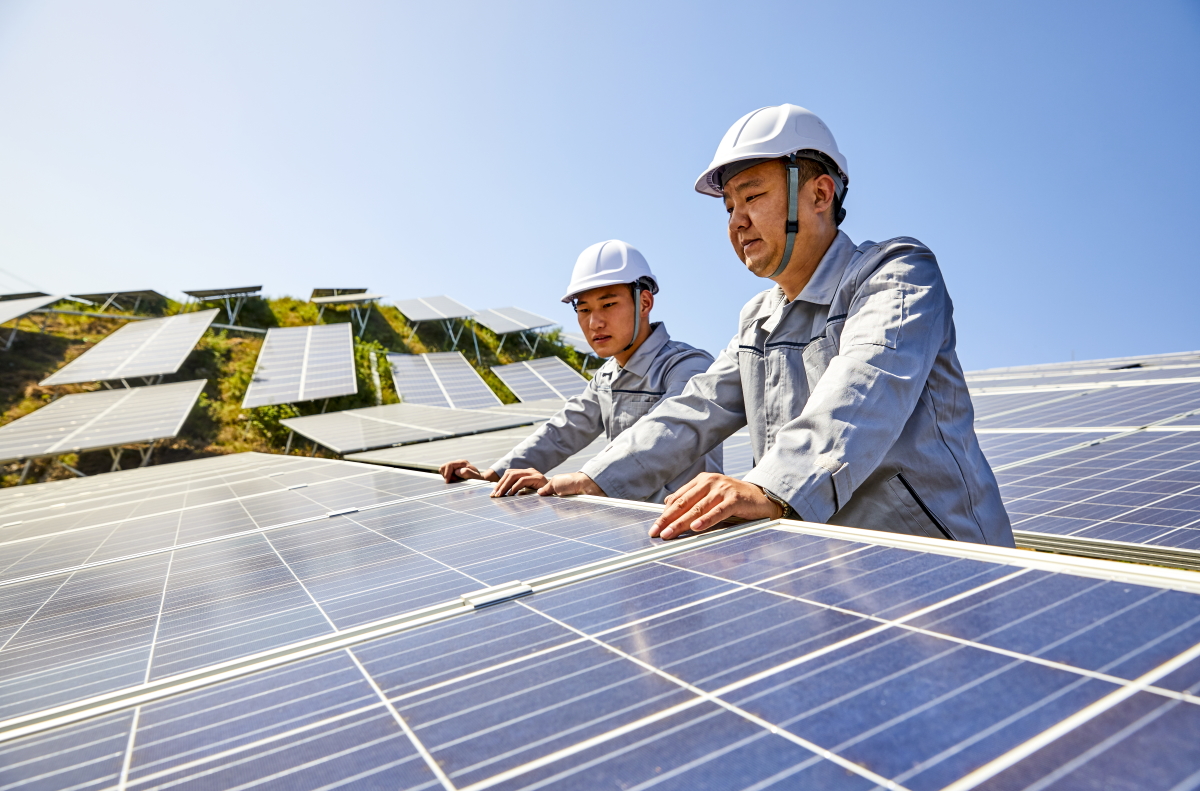China’s ambitious green goals are further fuelling its already strong solar energy sector. The Asian nation produces more solar energy than any other country, accounting for more than 30% of global installed solar capacity, according to calculations by Carbon Brief.
President Xi Jinping has set a target for the country to be carbon-neutral by 2060 and for 25% of the energy mix to be from renewables by 2030. This ambitious goal is fostering further development in the solar and wind market. In 2021, China installed 54.9 gigawatts (GW) of solar power, bringing the total solar capacity to over 305 GW. This came in addition to a total of 26 GW of offshore wind capacity and 21 GW of onshore wind power. By 2030, the world’s largest greenhouse gas emitter has targeted to increase its solar and wind power capacity to 1,200 GW or 1.2 terawatt (TW).
Especially solar energy is predicted to have a bright future, with the International Energy Agency (IEA) referring to solar as the “king of energy” and predicting that it will account for 80% of worldwide electricity generating growth in the next decade.
How China is expanding its solar energy market
China’s solar energy market developed from an important export industry in the early 2000s to a critical renewable energy industry. “We have witnessed a special policy dynamic for solar energy in the last ten years: from stimulating solar energy equipment manufacturers, to stimulating solar power generators, and now trending towards de-capacity”, US-based publication China Focus wrote in an industry insight.
A combination of local subsidies for producers, low sales margins, and import restrictions has fuelled China’s dominance over the majority of worldwide markets in the solar energy industry. Solar deployment is tipped to increase further in 2022, given the country’s track record of rapid installation of solar and wind capacity in recent years.
The China Electricity Council (CEC) expects the country’s cumulative grid connected solar power capacity at the end of 2022 to reach 400 GW, which would be an increase compared to 2021 of around 90 GW. According to research organisation BloombergNEF, the country’s deployed solar capacity could be 4.2TW by 2050.
As per Lombard Odier’s recent white paper “Predictors of Success in a Greening World”, “China’s early and aggressive entry into the market for solar panels is just one example of how decisive policy coupled with pre-existing industrial capabilities can allow a country, in a short space of time, to capture the lion’s share of a growing global market early in the product lifecycle.”
For investors looking to tap into the opportunities presented by this market, China has the two largest players, according to Nicole Vettise, Portfolio Manager, Emerging Markets Equity Institutional at Franklin Templeton. “One is the world’s largest solar photovoltaic (PV) glass producer. It commands a global market share of 32% and key competitive advantages are its scale and the ability to produce increasingly thinner solar glass. All of its solar glass production uses natural gas while some of its peers are using carbon-heavy coal and oil, so this company goes further in helping to resolve climate challenges.”
According to Vettise, China is also home to the second largest global solar glass producer with a 21% global market share and the overseas market representing 30% of its sales.
In general, Chinese solar energy companies have taken off after Xi’s annoucement of the ambitious green goals two years ago. The CSI Photovoltaic Industry Index, which tracks the shares of 50 major listed domestic solar energy companies, rose 45% last year (4. January to 30. December 2021).
Upcoming obstacles for solar industry growth in China
However, there are several factors that are currently putting pressure on the industry. According to Citic Securities’ research report issued last December, revenue growth in China’s PV market will decelerate to roughly 40% in 2022, after growing at a blazing 110% in 2021.
One major concern is China’s recent subsidy removal on renewable energy. With effect from August 1, 2021, the country has eliminated subsidies to new solar and wind power projects from the Central government budget. This could hamper the industry growth.
Another factor is that production capacity in the solar photovoltaic sector has outpaced production of the main raw material, polysilicon. In 2020, supply chain disruptions led to higher polysilicon prices, which lead to a price increase throughout the industrial chain. Since the beginning of 2020 the price of PV-grade polysilicon has more than quadrupled, an IEA report stated in December.
As per the energy agency, rising commodity prices in general have increased the cost of producing solar PV modules. “This situation has short-term implications for equipment manufacturers, project developers and policy makers. Higher prices for solar PV and wind equipment have reversed the cost reduction trend that the industry has seen for more than a decade and may delay the financing of some projects already in the pipeline”, the IEA report said.
The polysilicon price increases also rise questions if solar energy projects in China are still profitable. Qian Jing, vice president of PV module provider JinkoSolar Holding, said at an industry meeting in mid-December, that power plant operators are already feeling the surge in raw material prices. According to him, this is reflected in the 53 GW of solar power capacity installed in China in 2021, which was lower than the forecasts of 55 GW and 65 GW by the China Photovoltaic Industry Association (CPIA).
“In the long run, the solar energy sector will keep growing for sure, but individual companies may be subject to risk,” Caixing Gobal quoted Peng Peng, Secretary General of the China New Energy Assets Investment and Financing Platform.










 Australia
Australia China
China India
India Indonesia
Indonesia Japan
Japan Malaysia
Malaysia Philippines
Philippines Singapore
Singapore South Korea
South Korea Taiwan
Taiwan Thailand
Thailand Vietnam
Vietnam Germany
Germany Hong Kong
Hong Kong USA
USA Switzerland
Switzerland Singapore
Singapore
 United Kingdom
United Kingdom







